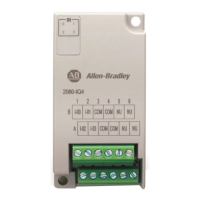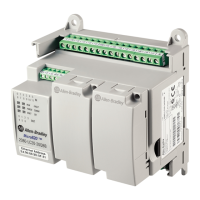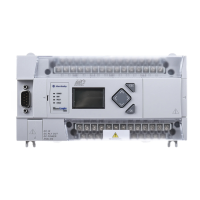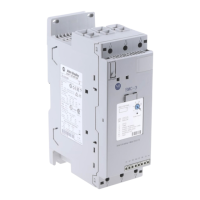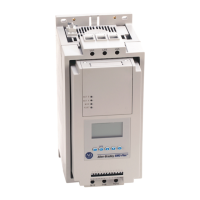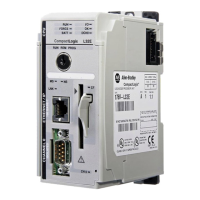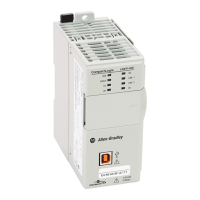Rockwell Automation Publication 2080-UM002N-EN-E - November 2022 191
Chapter 9 Motion Control
Conditions for Successful Homing
For homing operation to be successful, all configured switches (or sensors) must be properly
positioned and wired. The correct position order from the most negative position to the most
positive position—that is, from the leftmost to the rightmost in the homing setup diagrams in
this section—for the switches are:
1. Lower Limit switch
2. ABS Home switch
3. Upper Limit switch
During MC_Home function block execution, the home position will be reset, and the soft limits
mechanical position will be recalculated. During homing sequence, the motion configuration
for the soft limits will be ignored.
The homing motion sequence discussed in this section has the following configuration
assumptions:
1. Homing direction is configured as negative direction;
2. The Lower limit switch is configured as enabled and wired;
The different homing modes, as defined in Table 36
, can have different, but still similar motion
sequence. The concept discussed below is applicable to various homing configurations.
MC_HOME_ABS_SWITCH
MC_HOME_ABS_SWITCH (0) homing procedure performs a homing operation against the home
switch. The actual motion sequence is dependent on the home switch, limit switch
configuration, and the actual status for the switches before homing starts—that is, when the
MC_Home function block is issued.
Scenario 1: Moving part at right (positive) side of home switch before homing starts
The homing motion sequence for this scenario is as follows:
1. Moving part moves to the left side (negative direction);
2. When home switch is detected, the moving part decelerates to stop;
3. Moving part moves back (positive direction) in creep velocity to detect home switch
On->Off edge;
4. Once home switch On->Off is detected, record the position as mechanical home
position, and decelerate to stop;
5. Move to the configured home position. The mechanical home position recorded during
moving back sequence, plus the home offset configured for the axis in the Connected
Components Workbench software.
Scenario 2: Moving part is in between Lower Limit and Home switch before homing starts
The homing motion sequence for this scenario is as follows:
1. Moving part moves to its left side (negative direction);
2. When lower limit switch is detected, the moving part decelerates to stop, or stop
immediately, according to limit switch hard stop configuration;
3. Moving part moves back (in positive direction) in creep velocity to detect home switch
On->Off edge;
4. Once home switch On->Off edge is detected, record the position as mechanical home
position, and decelerate to stop;
IMPORTANT If home switch is not configured as enabled, MC_HOME_ABS_SWITCH (0)
homing fails with MC_FB_ERR_PARAM.
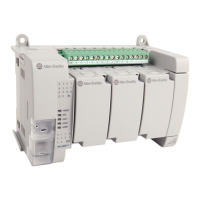
